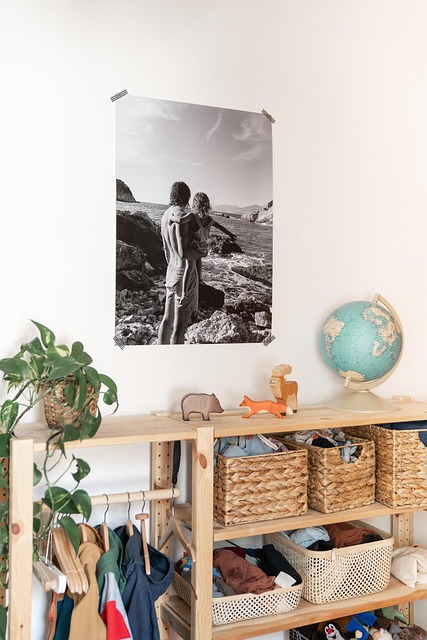Garage Sale Guide: Plan, Promote, and Profit
A well-run garage sale does more than clear clutter—it turns unused items into cash while giving your belongings a second life. Whether you have a single closet to purge or a houseful of goods, a strategic approach saves time, reduces stress, and helps you reach the right buyers. This guide covers planning, pricing, promotion, and day-of execution, including a simple way to streamline online listings with a consistent tagging method.

Plan your garage sale like a pro
Start by checking local rules. Some cities require permits for yard, garage, or moving sales, and homeowners associations often set limits on signs and parking. Pick a date and time that suits your neighborhood’s traffic—early mornings on weekends typically work best. If possible, coordinate with neighbors for a multi-family or block sale to draw more foot traffic.
Make an inventory list a week in advance. Group items into categories (kids’ items, kitchenware, tools, books, decor) and note condition and any missing parts. Clean and test electronics, assemble small furniture, and gather supplies: folding tables, hangers, clothing racks, price stickers, permanent markers, extension cords, and bags. Set a simple goal—e.g., clear 80% of items and cover a target amount—so your decisions during haggling are consistent.
Can bulk_create_keyword help you list items?
If you plan to post some items online (e.g., on local marketplace groups or classifieds) before or during the sale, organization matters. A practical tactic is to use one consistent tagging phrase across your posts so they’re easy to find and manage later. Some sellers refer to this as using a “bulk create keyword”—for example, replacing a placeholder like bulk_create_keyword with your own unique tag (e.g., GS-Spring-Tools) in titles or descriptions. That way, you and your buyers can search the tag to see all related items.
To go faster, prepare a simple spreadsheet with columns for title, category, short description, price, and your tag. On platforms that allow batch uploads or template reuse, you can paste and tweak details efficiently while keeping formatting consistent. If batch upload isn’t available, the spreadsheet still helps you copy-paste quickly and avoid errors. Just ensure your tag is short, readable, and not misleading, and remove it from any listings where it doesn’t belong.
Pricing, display, and haggling tips
Clear, fair pricing and a clean layout encourage browsing. As a rule of thumb, everyday items in good condition sell around 10–30% of their original retail price; collectibles, brand-name tools, or rare books might fetch more depending on demand and condition. Price items individually where feasible, or use color-coded stickers for speed (e.g., blue = $1, green = $3, red = $5). For small items, consider “Everything on this table $2” to keep things moving.
Stage your space like a tiny store. Group similar items, hang clothing by size, and put high-demand goods (tools, kids’ gear, small appliances) front and center. Keep extension cords and outlets available to test items. Be prepared to negotiate; decide your minimums in advance and consider bundle deals (“Any 5 books for $5”) to boost average transaction size.
Promote your sale online and locally
Effective promotion blends online reach with clear local signage. Post on community platforms (local social groups, classifieds, neighborhood apps) two to three days before the sale, with a fresh reminder the evening prior. Include a concise title, the general area (avoid posting your exact address too early if you prefer), time window, top categories, and standout items. Use well-lit photos and your consistent tag to help people locate all your listings.
For physical signs, check local regulations first. Use large, readable arrows, high-contrast colors, and minimal text—street name, time, and directional arrows are enough. Place signs at key intersections leading directly to your location, and remove them promptly after the sale. Consider a simple map pin or QR code on signs that links to your primary online post with details.
Run a smooth sale day
Start early. Set up at least 30–60 minutes before your advertised time to avoid early-bird bottlenecks. Keep a cash box with plenty of small bills and coins, and clearly display accepted payment options. Many buyers prefer digital payments, so set up a mobile wallet or payment app and show your handle on a small sign. If you use digital payments, confirm receipt before handing over items.
Create a small “service area” with tape, a screwdriver, measuring tape, and batteries so shoppers can check fit and function. Offer simple packaging—bags, newspaper, or bubble wrap—for fragile items. Maintain a friendly tone and move slow sellers to a markdown table halfway through the sale. Keep pathways clear for safety, and assign roles if you’re hosting with family or neighbors: greeter, cashier, and floor helper.
What to do with unsold items
Have a plan before you start selling. Designate a donation pile and identify local charities or thrift stores that accept specific categories (e.g., clothing, housewares, books). Some organizations offer pickup for larger quantities; if not, schedule a drop-off soon after the sale while items are still sorted. For electronics or hazardous materials, look up local e-waste and recycling guidelines to dispose responsibly.
If you’d like to keep selling select items, move them to online platforms with better audiences for their category. Refresh your photos, tighten descriptions, and consider minor price adjustments. For leftovers that aren’t worth listing, a curbside “free” post is often the fastest way to rehome useful goods. Finally, box seasonal items neatly if you plan a future sale, and update your inventory list for next time.
Conclusion
A successful garage sale comes down to clarity: clear goals, clear prices, clear signs, and a clear system for managing listings. Combine thoughtful staging with strategic promotion and a simple tagging approach for online posts to reach more buyers and streamline your workflow. With a bit of planning, you’ll declutter efficiently and create a smooth experience for everyone who stops by.





